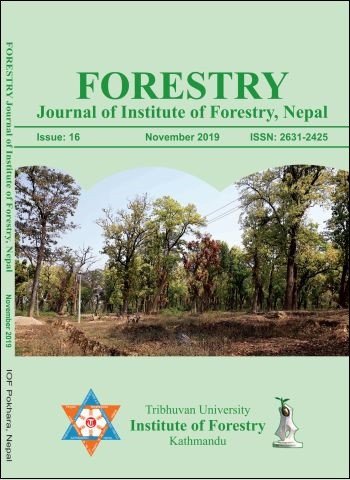Assessment of Avifaunal Diversity and Threats to them in Phewa Wetland, Nepal
DOI:
https://doi.org/10.3126/forestry.v16i0.28352Keywords:
Relative abundance, species diversity, terrestrial bird, wetland bird, globally and nationally threatened speciesAbstract
We assessed species diversity and relative abundance during February - March by employing transect method in four line transects and 30 point count stations, and associated threats by direct observations and consultation with people (n= 1) living in vicinity of Phewa wetland. We counted 2651 bird individuals of 148 species belonging to 104 Genera of 44 Families under 11 Orders. Anatidae and Passeriformes with 11% and 39%, respectively were the dominant family and order among the recorded species. Out of these, seven bird species were globally threatened and 12 were nationally threatened. Terrestrial birds had higher species diversity (H'= 3.27), species richness (R= 11.98) and species evenness (e= 0.74) as compared to wetland birds (H' = 3.07, R= 8.44 and e = 0.73). Common pigeon (7.50%) was the most abundant bird followed by lesser whistling duck (6.98%). People in the vicinity of Phewa wetland reported that water pollution caused by domestic sewages and waste water disposal was the major threat to birds and their habitat. Phewa wetland is providing crucial habitat to adequate residential and migratory bird species for which it should be protected for further enhancement of number of avian species.
Downloads
Downloads
Published
How to Cite
Issue
Section
License
© Tribhuvan University, Institute of Forestry




